Likely at the top of your must-do list for Athens, the Acropolis isn’t just one stop. Make a day of it by getting a thorough tour of the entire Acropolis area, dedicating your morning to the museum and your afternoon to the outdoor sites. Here’s how to go about your day at the Acropolis area of Athens:
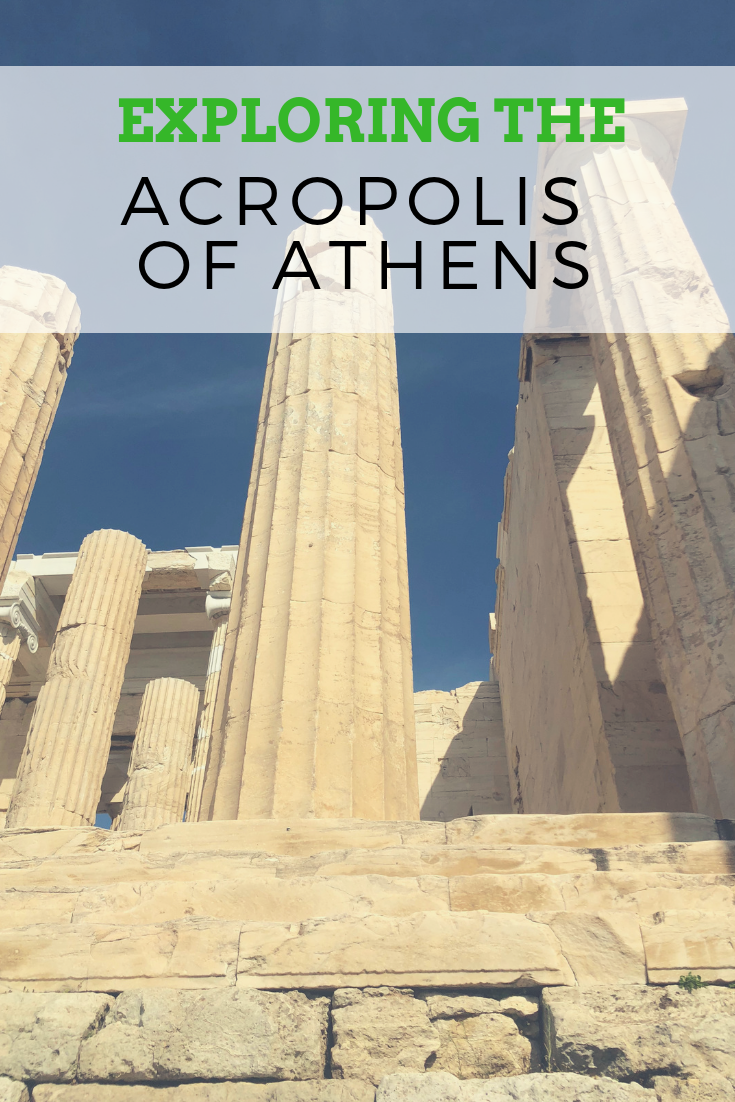
Table of Contents
Acropolis Museum:
The Acropolis Museum is where you’ll learn what, exactly, you’re about to see and why it matters. We suggest doing it first, even though the outdoor sites are likely to be cooler in the morning, because of the cruise ship schedule: try to walk around the ruins of the Acropolis in the morning and you’re likely to find yourself in long entry lines.
The museum makes a great first impression: you’ll walk right over impressive ruins, once upon a time a neighborhood of baths, markets and houses under modern-day Athens. They’re now under glass, so you walk right over archeological sites that date back to the fifth century BC. After entering the museum, the first collection in the wide glass-floored gallery displays artifacts from the slopes of the Acropolis. Basically, you’re going to see the things that used to be on the hill, in the Parthenon. In antiquity, the slopes of the Sacred Rock was the transition zone between the city and its most famous sanctuary, where large and small sanctuaries existed alongside private houses. Yes, there were private residences that close to the impressive Acropolis.
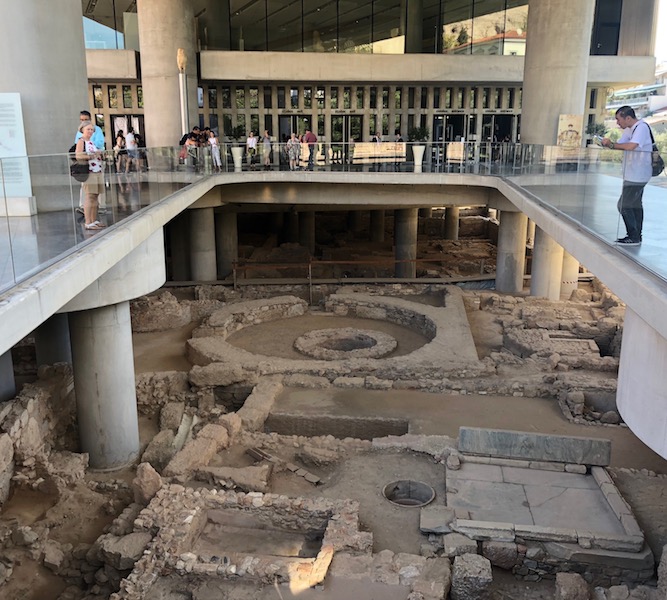
Definitely make a stop in the Parthenon Gallery on the third floor for the video presentation about the Parthenon. This will give kids, especially, better background before they ascend the slope.
Acropolis:
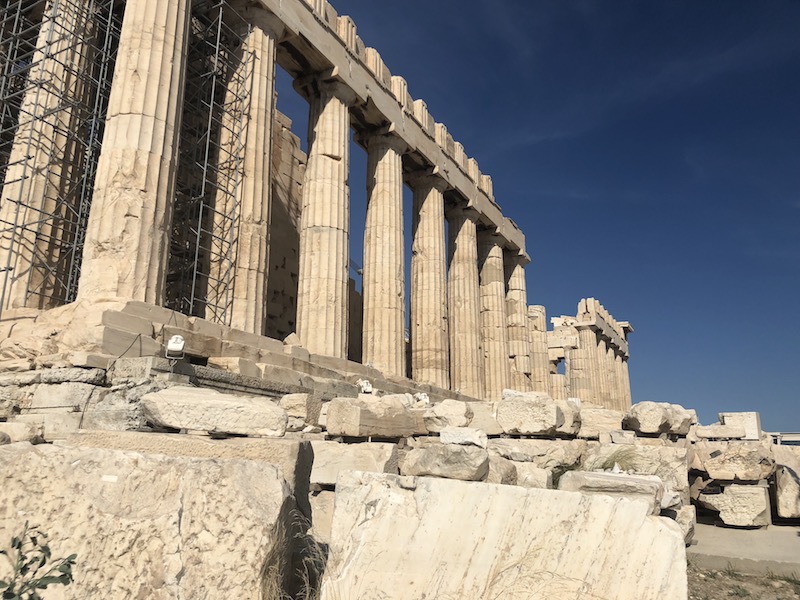
Time to see the actual Acropolis! At this UNESCO site, you’ll see arguably the greatest architectural endeavors of Greek Antiquity. A tiny bit of background: in the second half of the fifth century BC, thought and art flourished in Athens, and artists, under the inspired guidance of the sculptor Pheidias and the help of a lot of slaves, no doubt, transformed the rocky hill into a unique monument to the arts. We suggest seeing this sprawling hillside with a guide, but if you go it solo, get an audio guide, at very least. There’s a lot to see, and not too many signs or markers to help you out.

Give yourself at least two hours to ascend the hill, walk around the top to see the structures dedicated to Athena and Nike (among others) from every angle, then back down, stopping to see a few of the lesser buildings.
The Hills of the Muses:
Next, go back to the cobbled pedestrian walkway at the base of the Acropolis and ascend a lesser hill, leading to the Hills of the Muses Philopappos, Pnyx, and Nymphs. This archeological site has over a dozen points of interest, including the old gate to the city and the site of the birth of democracy, where citizens first embraced this style of government (minus, of course women and slaves, who continued to have no rights or voice). Don’t miss the ‘prison of Socrates’, incorrectly named; it was not a prison at all, but rather the hiding place for many Greek antiquities during the second world war. Even under torture, the Greeks did not reveal where they’d hidden the treasures that are now enjoyed by the world in museums.
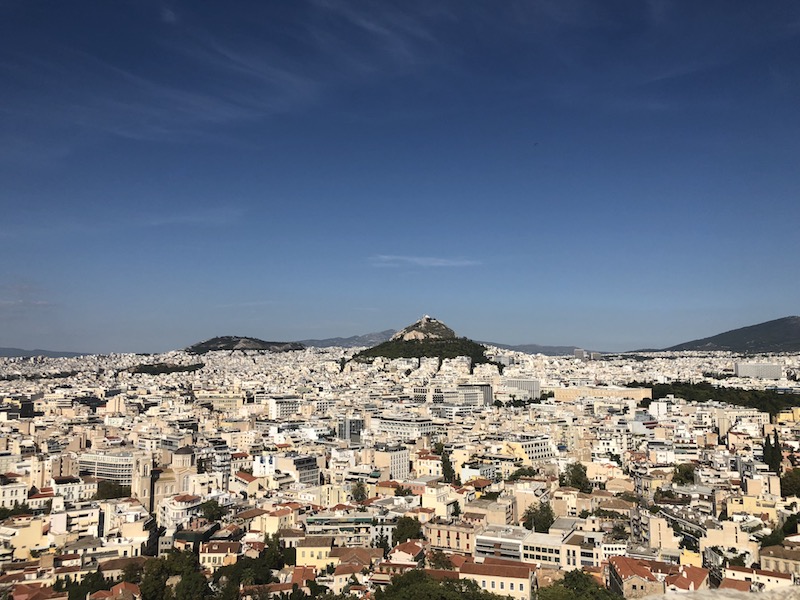
You’ll also see some of the best views of the Acropolis and the surrounding city from these hills, and there are outcroppings of rocks and interesting terrain for kids to explore. Even on a crowded day, you can feel quite away from the crowds in this section, and it’s well shaded in many areas.
Athens public markets:
There are three Agoras in downtown Athens. We visited the Ancient Agora where the Thission building is, below the Acropolis and the hill of Areospagos. It’s an easy exit point after doing the hill area described above. You’ll find a lively flea market just past the ruins of the Agora, and the narrow streets here are fun to poke around in. (Just be on alert for pickpockets.) You can also find quite a few dining options in this part of town with inviting sidewalk seating and shaded patios. Alternatively, you can head to the Athens Dimotiki Agora (Public Market) for meat, seafood and produce, as well as nuts and seed and dried fruits.
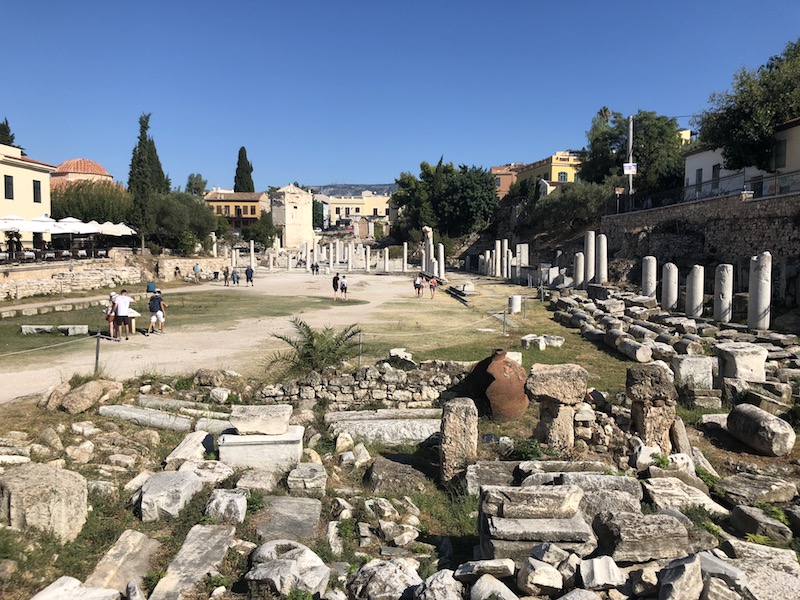
Bonus: after visiting the Acropolis area, learn more about the daily lives of ancient Athenians at the Museum of Cycladic Art. While it’s known for its Cycladic collection, of course, the entire fourth floor is devoted to day-to-day Greek antiquity. The exhibit is designed to let you follow the life of an Athenian male from birth until death, with panels and artifacts depicting an ancient Athenian wedding, school and social life, funeral, and more. The short film recreating the Athenian’s life is well worth watching (it’s about 10 minutes long).

GENERAL TIPS:
- We found Athenians to be a friendly, welcoming people, and everyone we interacted with had a smile for us. There is a metro system throughout the city, but we took taxi cabs exclusively, which proved to be plentiful and quite quick. There is no separate Uber/Lyft system in Athens, but the Uber app will work, connecting you to city cabs so you can forgo using cash. If you opt to use the metered cabs instead, just know that they only take cash. We never felt cheated by a cab driver during our stay.
- If you like strong coffee, try the Greek coffee treat known as a frappe or ‘nescafe’, available everywhere hot or iced. They’re a rich, frothy brew, in a size more in-line with an American coffee to go, as opposed to a espresso.
- The Greek language is tough, and no one will expect you to speak it, but knowing a few greetings can go a long way. The phonetic spelling for ‘hello’ is YAH-soo, and ‘good morning’ is kah-lee-MER-ah. Both ‘please’ and ‘thank you’ is para-kah-LOE.
Want tips on where to stay in Athens? We have our Athens hotel picks here.





